
Vincent van Gogh Painting Reproductions 11 of 18
1853-1890
Dutch Post-Impressionist Painter
416 Vincent van Gogh Paintings
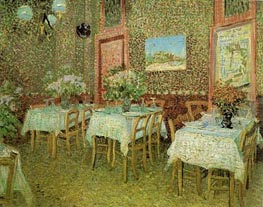
Interior of a Restaurant 1887
Oil Painting
$834
$834
Canvas Print
$75.72
$75.72
SKU: VVG-1343
Vincent van Gogh
Original Size: 45.5 x 56 cm
Kroller-Mueller Museum, Otterlo, Netherlands
Vincent van Gogh
Original Size: 45.5 x 56 cm
Kroller-Mueller Museum, Otterlo, Netherlands
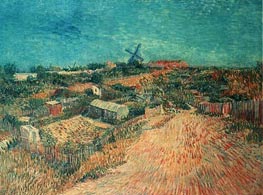
Vegetable Gardens in Montmartre: La Butte Montmart 1887
Oil Painting
$866
$866
SKU: VVG-1344
Vincent van Gogh
Original Size: 96 x 120 cm
Stedelijk Museum of Modern Art, Amsterdam, Netherlands
Vincent van Gogh
Original Size: 96 x 120 cm
Stedelijk Museum of Modern Art, Amsterdam, Netherlands
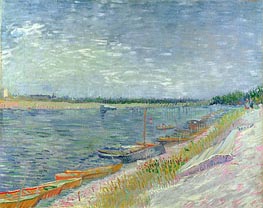
View of a River with Rowing Boats 1887
Oil Painting
$565
$565
Canvas Print
$63.59
$63.59
SKU: VVG-1345
Vincent van Gogh
Original Size: 52 x 65 cm
Private Collection
Vincent van Gogh
Original Size: 52 x 65 cm
Private Collection
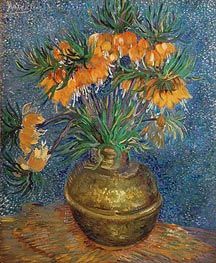
Crown Imperial Fritillaries in a Copper Vase 1886
Oil Painting
$765
$765
Canvas Print
$76.75
$76.75
SKU: VVG-1346
Vincent van Gogh
Original Size: 73 x 60.5 cm
Musee d'Orsay, Paris, France
Vincent van Gogh
Original Size: 73 x 60.5 cm
Musee d'Orsay, Paris, France
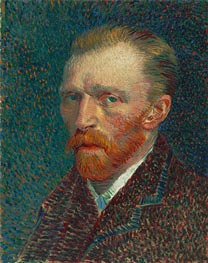
Self-Portrait 1887
Oil Painting
$625
$625
Canvas Print
$61.75
$61.75
SKU: VVG-1347
Vincent van Gogh
Original Size: 41 x 32.5 cm
Art Institute of Chicago, Illinois, USA
Vincent van Gogh
Original Size: 41 x 32.5 cm
Art Institute of Chicago, Illinois, USA
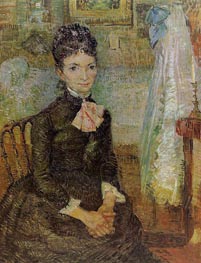
Woman Sitting by a Cradle 1887
Oil Painting
$708
$708
Canvas Print
$69.42
$69.42
SKU: VVG-1348
Vincent van Gogh
Original Size: 60.7 x 45.7 cm
Van Gogh Museum, Amsterdam, Netherlands
Vincent van Gogh
Original Size: 60.7 x 45.7 cm
Van Gogh Museum, Amsterdam, Netherlands
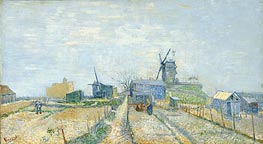
Vegetable Gardens in Montmartre 1887
Oil Painting
$755
$755
Canvas Print
$61.75
$61.75
SKU: VVG-1349
Vincent van Gogh
Original Size: 44.8 x 81 cm
Van Gogh Museum, Amsterdam, Netherlands
Vincent van Gogh
Original Size: 44.8 x 81 cm
Van Gogh Museum, Amsterdam, Netherlands
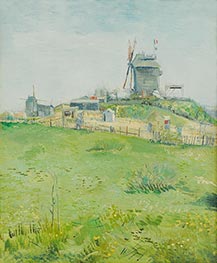
Le Moulin de la Galette 1887
Oil Painting
$476
$476
Canvas Print
$61.75
$61.75
SKU: VVG-1350
Vincent van Gogh
Original Size: 47.3 x 39.3 cm
Carnegie Museum of Art, Pittsburgh, USA
Vincent van Gogh
Original Size: 47.3 x 39.3 cm
Carnegie Museum of Art, Pittsburgh, USA
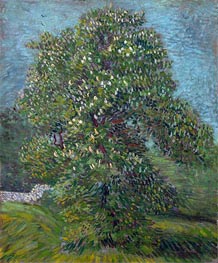
Chestnut Tree in Blossom 1887
Oil Painting
$565
$565
Canvas Print
$77.43
$77.43
SKU: VVG-1351
Vincent van Gogh
Original Size: 55.8 x 46.5 cm
Van Gogh Museum, Amsterdam, Netherlands
Vincent van Gogh
Original Size: 55.8 x 46.5 cm
Van Gogh Museum, Amsterdam, Netherlands
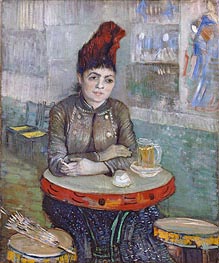
Agostina Segatori Sitting in the Cafe du Tambourin c.1887/88
Oil Painting
$612
$612
Canvas Print
$79.84
$79.84
SKU: VVG-1352
Vincent van Gogh
Original Size: 55.5 x 46.5 cm
Van Gogh Museum, Amsterdam, Netherlands
Vincent van Gogh
Original Size: 55.5 x 46.5 cm
Van Gogh Museum, Amsterdam, Netherlands
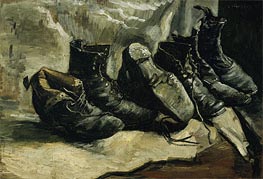
Three Pair of Shoes c.1886/87
Oil Painting
$677
$677
Canvas Print
$78.13
$78.13
SKU: VVG-1353
Vincent van Gogh
Original Size: 48.2 x 71.1 cm
Fogg Art Museum at Harvard University, Massachusetts, USA
Vincent van Gogh
Original Size: 48.2 x 71.1 cm
Fogg Art Museum at Harvard University, Massachusetts, USA
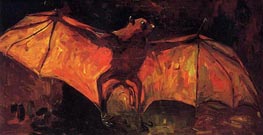
Stuffed Kalong 1884
Oil Painting
$544
$544
Canvas Print
$61.75
$61.75
SKU: VVG-1354
Vincent van Gogh
Original Size: 41.5 x 79 cm
Van Gogh Museum, Amsterdam, Netherlands
Vincent van Gogh
Original Size: 41.5 x 79 cm
Van Gogh Museum, Amsterdam, Netherlands
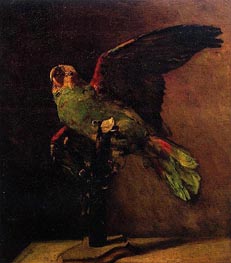
The Green Parrot 1886
Oil Painting
$473
$473
Canvas Print
$63.86
$63.86
SKU: VVG-1355
Vincent van Gogh
Original Size: 48 x 43 cm
Private Collection
Vincent van Gogh
Original Size: 48 x 43 cm
Private Collection
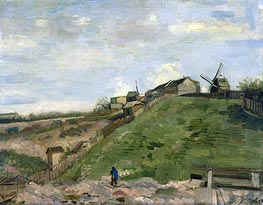
The Hill of Montmartre with Stone Quarry 1886
Oil Painting
$448
$448
Canvas Print
$61.75
$61.75
SKU: VVG-1356
Vincent van Gogh
Original Size: 32 x 41 cm
Van Gogh Museum, Amsterdam, Netherlands
Vincent van Gogh
Original Size: 32 x 41 cm
Van Gogh Museum, Amsterdam, Netherlands
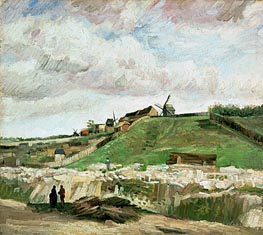
The Hill of Montmartre with Stone Quarry 1886
Oil Painting
$495
$495
Canvas Print
$61.75
$61.75
SKU: VVG-1357
Vincent van Gogh
Original Size: 32 x 41 cm
Van Gogh Museum, Amsterdam, Netherlands
Vincent van Gogh
Original Size: 32 x 41 cm
Van Gogh Museum, Amsterdam, Netherlands
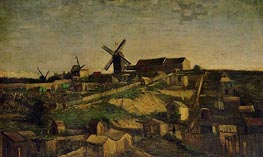
View of Montmartre with Windmills 1886
Oil Painting
$581
$581
Canvas Print
$61.75
$61.75
SKU: VVG-1358
Vincent van Gogh
Original Size: 38 x 61 cm
Kroller-Mueller Museum, Otterlo, Netherlands
Vincent van Gogh
Original Size: 38 x 61 cm
Kroller-Mueller Museum, Otterlo, Netherlands
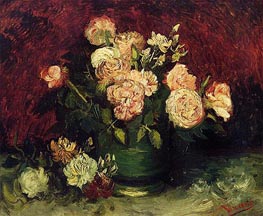
Bowl with Peonies and Roses 1886
Oil Painting
$780
$780
Canvas Print
$76.91
$76.91
SKU: VVG-1359
Vincent van Gogh
Original Size: 59.8 x 72.5 cm
Kroller-Mueller Museum, Otterlo, Netherlands
Vincent van Gogh
Original Size: 59.8 x 72.5 cm
Kroller-Mueller Museum, Otterlo, Netherlands

Bowl with Sunflowers, Roses and Other Flowers 1886
Oil Painting
$544
$544
Canvas Print
$66.11
$66.11
SKU: VVG-1360
Vincent van Gogh
Original Size: 50 x 61 cm
Stadtische Kunssthalle, Mannheim, Germany
Vincent van Gogh
Original Size: 50 x 61 cm
Stadtische Kunssthalle, Mannheim, Germany

A Pair of Shoes 1886
Oil Painting
$445
$445
Canvas Print
$61.75
$61.75
SKU: VVG-1361
Vincent van Gogh
Original Size: 38 x 45.3 cm
Van Gogh Museum, Amsterdam, Netherlands
Vincent van Gogh
Original Size: 38 x 45.3 cm
Van Gogh Museum, Amsterdam, Netherlands
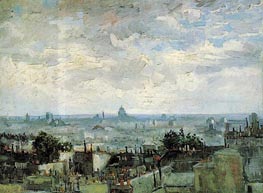
View of the Roofs of Paris 1886
Oil Painting
$677
$677
Canvas Print
$69.26
$69.26
SKU: VVG-1362
Vincent van Gogh
Original Size: 54 x 72.5 cm
Van Gogh Museum, Amsterdam, Netherlands
Vincent van Gogh
Original Size: 54 x 72.5 cm
Van Gogh Museum, Amsterdam, Netherlands
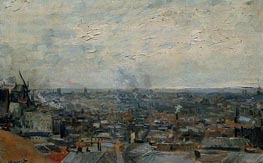
View of Paris from Montmartre 1886
Oil Painting
$625
$625
Canvas Print
$61.75
$61.75
SKU: VVG-1363
Vincent van Gogh
Original Size: 38.5 x 61.5 cm
Kunstmuseum, Basel, Switzerland
Vincent van Gogh
Original Size: 38.5 x 61.5 cm
Kunstmuseum, Basel, Switzerland
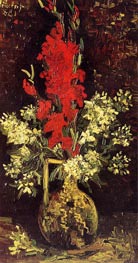
Vase with Gladioli and Carnations 1886
Oil Painting
$671
$671
Canvas Print
$61.75
$61.75
SKU: VVG-1364
Vincent van Gogh
Original Size: 65.5 x 35 cm
Museum Boijmans Van Beuningen, Rotterdam, Netherlands
Vincent van Gogh
Original Size: 65.5 x 35 cm
Museum Boijmans Van Beuningen, Rotterdam, Netherlands
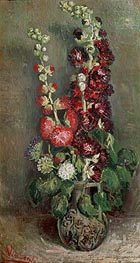
Vase with Hollyhocks 1886
Oil Painting
$788
$788
Canvas Print
$83.03
$83.03
SKU: VVG-1365
Vincent van Gogh
Original Size: 91 x 50.5 cm
Kunsthaus, Zurich, Switzerland
Vincent van Gogh
Original Size: 91 x 50.5 cm
Kunsthaus, Zurich, Switzerland
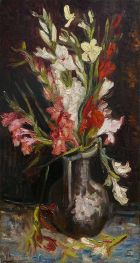
Vase with Red Gladioli 1886
Oil Painting
$598
$598
Canvas Print
$61.75
$61.75
SKU: VVG-1366
Vincent van Gogh
Original Size: 65 x 35.2 cm
Musee Granet, Aix-en-Provence, France
Vincent van Gogh
Original Size: 65 x 35.2 cm
Musee Granet, Aix-en-Provence, France